| [1] Heliövaara M. Risk factors for low back pain and sciatica. Ann Med. 1989;21(4):257-264. [2] 贾长青,王臣,陈勇,等.基质金属蛋白酶3和白细胞介素1在突出的腰椎间盘组织中的含量及其相关性研究[J].中国修复重建外科杂志,2006,20(12):1-2.[3] Sambrook PN, MacGregor AJ, Spector TD. Genetic influences on cervical and lumbar disc degeneration. Arthritis Rheum. 1999;42(2):366-372. [4] Tegeder I, Lötsch J. Current evidence for a modulation of low back pain by human genetic variants. J Cell Mol Med. 2009; 13(8B):1605-1619. [5] Kim NK, Shin DA, Han IB, et al. The association of aggrecan gene polymorphism with the risk of intervertebral disc degeneration. Acta Neurochir (Wien). 2011;153(1):129-133. [6] 程勇军,沈洪兴.椎间盘退变相关基因单核苷酸多态性的研究进展[J].第二军医大学学报,2012,32(11):1244-1248.[7] Kalb S, Martirosyan NL, Kalani M Y S, et al. Genetics of the degenerated intervertebral disc. World Neurosurg. 2012;77 (3-4):491-501. [8] Higashino K, Matsui Y, Yagi S, et al. The alpha2 type IX collagen tryptophan polymorphism is associated with the severity of disc degeneration in younger patients with herniated nucleus pulposus of the lumbar spine. Int Orthop. 2007;31(1):107-111. [9] Xu G, Mei Q, Zhou D, et al. Vitamin D Receptor Gene and Aggrecan Gene Polymorphisms and the Risk of Intervertebral Disc Degeneration-A Meta-Analysis. PloS one, 2012;7(11): e50243. [10] Cong L, Pang H, Xuan D, et al. Association between the expression of aggrecan and the distribution of aggrecan gene variable number of tandem repeats with symptomatic lumbar disc herniation in Chinese Han of Northern China. Spine.2010; 35(14):1371-1376. [11] Takahashi M, Haro H, Wakabayashi Y, et al. The association of degeneration of the intervertebral disc with 5a/6a polymorphism in the promoter of the human matrix metalloproteinase-3 gene. J Bone Joint Surg Br. 2001;83(4):491-495. [12] 肖斌,田伟,赵丹慧,等.TIMP-1666C>T 单核苷酸多态性与腰椎间盘退变相关性分析[J].中华医学杂志, 2010,90(41):2939-2942.[13] Tokta? ZO, Ek?i M?,Y?lmaz B, et al. Association of collagen I, IX and vitamin D receptor gene polymorphisms with radiological severity of intervertebral disc degeneration in Southern European Ancestor. Eur Spine J.2015;24(11):2432-2441. [14] 王兴盛,王想福,赵宁,等.甘肃汉族人群COL9A2基因多态性与腰椎间盘突出症术后复发的相关性研究[J].中国中医骨伤科杂志, 2017,26(11):7-10.[15] Aladin DM, Cheung KM, Chan D, et al. Expression of the Trp2 allele of COL9A2 is associated with alterations in the mechanical properties of human intervertebral discs. Spine (Phila Pa 1976).2007;32(25):2820-2826. [16] Bagheri MH, Honarpisheh AP, Yavarian M, et al. MRI Phenotyping of COL9A2/Trp2 and COL9A3/Trp3 Alleles in Lumbar Disc Disease: A Case-control Study in South-Western Iranian Population Reveals a Significant Trp3-Disease Association in Males. Spine (Phila Pa 1976). 2016;41(21): 1661-1667. [17] Janeczko ?, Janeczko M, Chrzanowski R, et al. The role of polymorphisms of genes encoding collagen IX and XI in lumbar disc disease. Neurol Neurochir Pol. 2014; 48(1):60-2. [18] Seki S, Kawaguchi Y, Mori M, et al. Association study of COL9A2 with lumbar disc disease in the Japanese population. J Hum Genet. 2006;51(12):1063-1067. [19] 宋海峰,吴志宏,费琦,等.中国汉族人群Trp2等位基因多态性与椎间盘退变性疾病的关联分析[J].中华医学杂志,2010,90(3):148-152.[20] 宋海峰,吴志宏,闫家智,等.腰椎间盘退变性疾病与COL9A2基因多态性的关系[J].中华实验外科杂志,2011,28(8):1381-1383.[21] 陈涛,黎观保,梁科友,等.腰椎间盘退变与COL9A2基因单核苷酸多态性的相关性[J].中国组织工程研究, 2013,17(9):1695-1702.[22] Rathod TN, Chandanwale AS, Gujrathi S, et al. Association between single nucleotide polymorphism in collagen IX and intervertebral disc disease in the Indian population. Indian J Orthop.2012; 46(4):420-426. [23] Meng T, Ren Q, Wang JM, et al. Association between COL9A2 Gln326Arg mutations and the development of intervertebral disc disease in a Chinese population. Genet Mol Res. 2016 Dec 19;15(4). [24] Hyun SJ, Park BG, Rhim SC, et al. A haplotype at the COL9A2 gene locus contributes to the genetic risk for lumbar spinal stenosis in the Korean population. Spine (Phila Pa 1976). 2011;36(16):1273-1278. [25] Buckwalter JA. Aging and degeneration of the human intervertebral disc. Spine.1995; 20(11):1307-1314. [26] Annunen S, Paassilta P, Lohiniva J, et al. An allele of COL9A2 associated with intervertebral disc disease. Science.1999; 285(5426):409-412. [27] Aladin DMK, Cheung KMC, Chan D, et al. Expression of the Trp2 allele of COL9A2 is associated with alterations in the mechanical properties of human intervertebral discs. Spine.2007;32(25): 2820-2826. [28] 吴成爱,王娜,肖斌,等COL9A2链19 外显子单核苷酸基因多态性与腰椎间盘退变相关性分析[J].中国脊柱脊髓杂志, 2013, 23(7):644-647.[29] Janeczko ?, Janeczko M, Chrzanowski R, et al. The role of polymorphisms of genes encoding collagen IX and XI in lumbar disc disease. Neurol Neurochir Pol. 2014; 48(1):60-62. [30] 秦集斌,宋洁富,荆志振,等.手术治疗腰椎间盘突出症的术后早期复发率与COL9A2基因多态性相关性研究[J].中国现代医药杂志, 2017,20(5):1-5.[31] Zhang Z, Zhang J, Ding L, et al. Meta-analysis of the association between COL9A2 genetic polymorphisms and lumbar disc disease susceptibility. Spine (Phila Pa 1976). 2014;39(20):1699-1706. [32] Wu H, Wang S, Chen W, et al. Collagen IX gene polymorphisms and lumbar disc degeneration: a systematic review and meta-analysis. J Orthop Surg Res. 2018;13(1):47. [33] Jim JJ, Noponen-Hietala N, Cheung KM, et al. The TRP2 allele of COL9A2 is an age-dependent risk factor for the development and severity of intervertebral disc degeneration. Spine (Phila Pa 1976).2005; 30(24):2735-2742. |
.jpg)
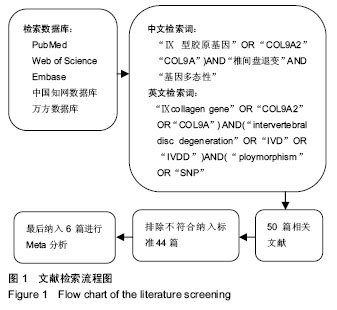
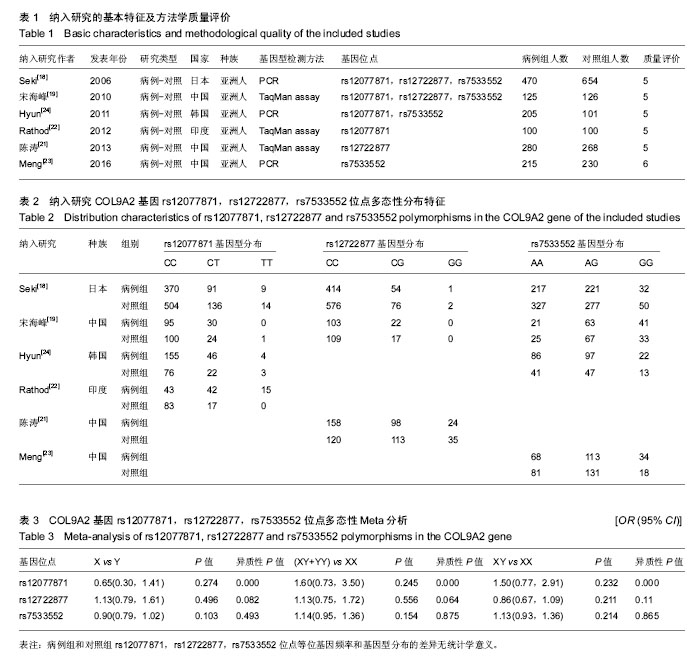
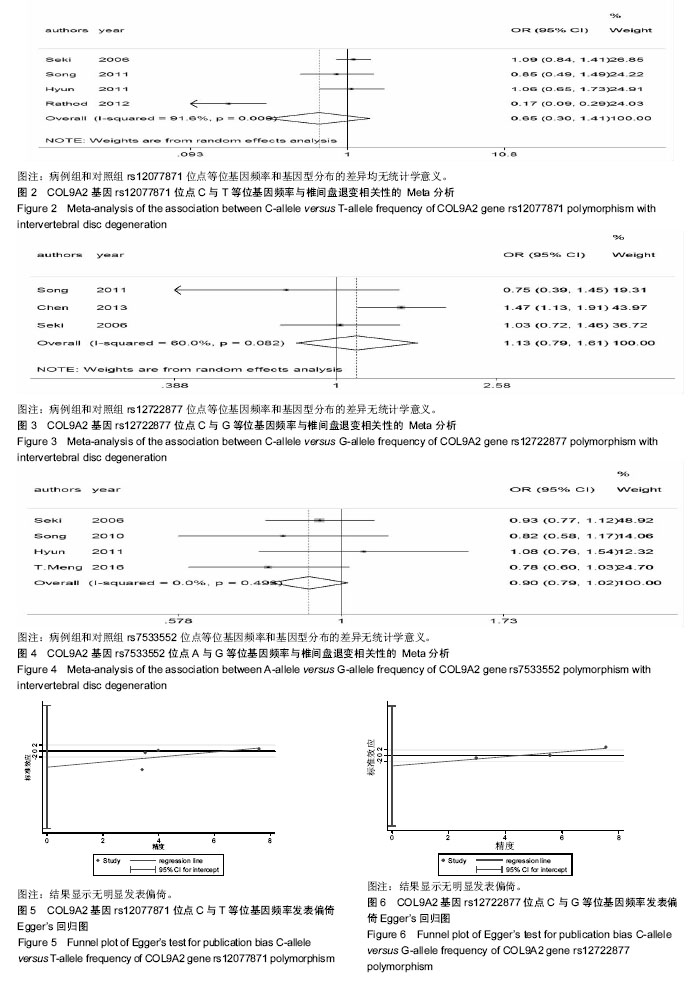
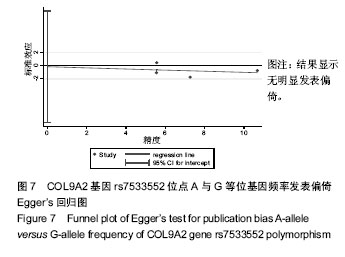
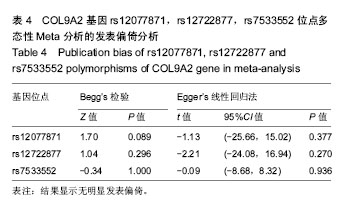
.jpg)